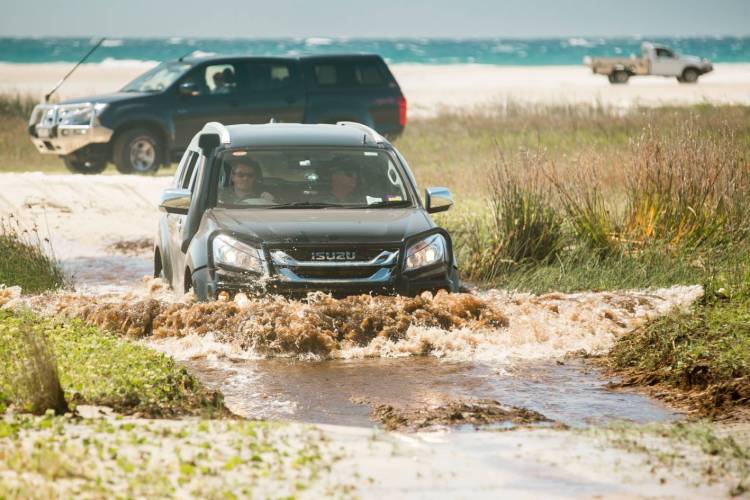You may have the best 4×4 in the world, but without some extra gear you won’t get far. Here’s what you need to know to go offroading with your 4×4.
THE BAD NEWS is that every 4×4 will need some sort of accessory for anything other than the most basic trips. The good news is that you absolutely don’t need to drop thousands of dollars on aftermarket gear.
What you do need to do is get the basics right; the gear you’d need for safety on any off-road trip, and then work out where and how you want to travel – the level of preparation required for a dirt road day trip is quite different to that of a multi-week desert expedition, and a trip with lots of water crossings has different demands to a day in difficult sand dunes.
One tip – if you’re buying a vehicle ensure you set aside money for accessories, equipment and extra servicing. So if your budget is $60k, think about $45-50,000 for the car and $10-$15,000 for accessories. Sounds like a lot, but suspension, tyres, storage systems and the like will add up quickly.
What you need for any off-road trip
- First aid kit and fire extinguisher – because you’ll be a long way from help;
- Tyres – light-truck construction tyres which handle loads better and resist puncture, perhaps with an all-terrain tread for better off-road grip;
- Suspension – heavier-duty suspension for better load carrying, perhaps with a slight lift. Your stock 4WD’s suspension is designed to carry a light load occasionally over normal roads. The average touring 4WD has 200-500kg of extra gear on it, all the time, and the suspension is simply not designed for that load or rough terrain;
- Vehicle weak points – just about every vehicle has its weak points, for example the rear door spare mount in Defenders. Fix those first. Your specialist 4WD mechanic or club will know what to do;
- Strong boxes – to store gear. Tie it down firmly, usually there are tie-down points in the back of the wagon;
- Mudmats and liners – strong rubber mats to protect the car;
- UHF CB (Citizen’s Band) radio – even if you buy a handheld you can communicate with other vehicles, trucks and sometimes outback stations. An in-car 5 watt unit plus a pair of handhelds is invaluable for safety and convenience. No license required, but that also means everyone will be listening in! and
- Navigation system – Google Maps may well not save you once off the beaten path, but a decent topographic map of the area will work even when your phone doesn’t.

A light-truck (LT) construction tyre is what you want for offroad touring. This doesn’t mean to say an aggressive mud-terrain with wide gaps between tread blocks, but it does mean a strong construction tyre.

Even utes need upgraded suspension to handle the touring demands of heavy loads over rough terrain, and their long wheelbase means they need a better ramp angle.

The basic options are shelves you load boxes into, or drawers. Here’s a complex but functional drawer system on the back of a Nissan Patrol.

A UHF Citizens Band radio can be operated without a license, and is almost essential for talking in convoy, to truckies and to outback stations.

